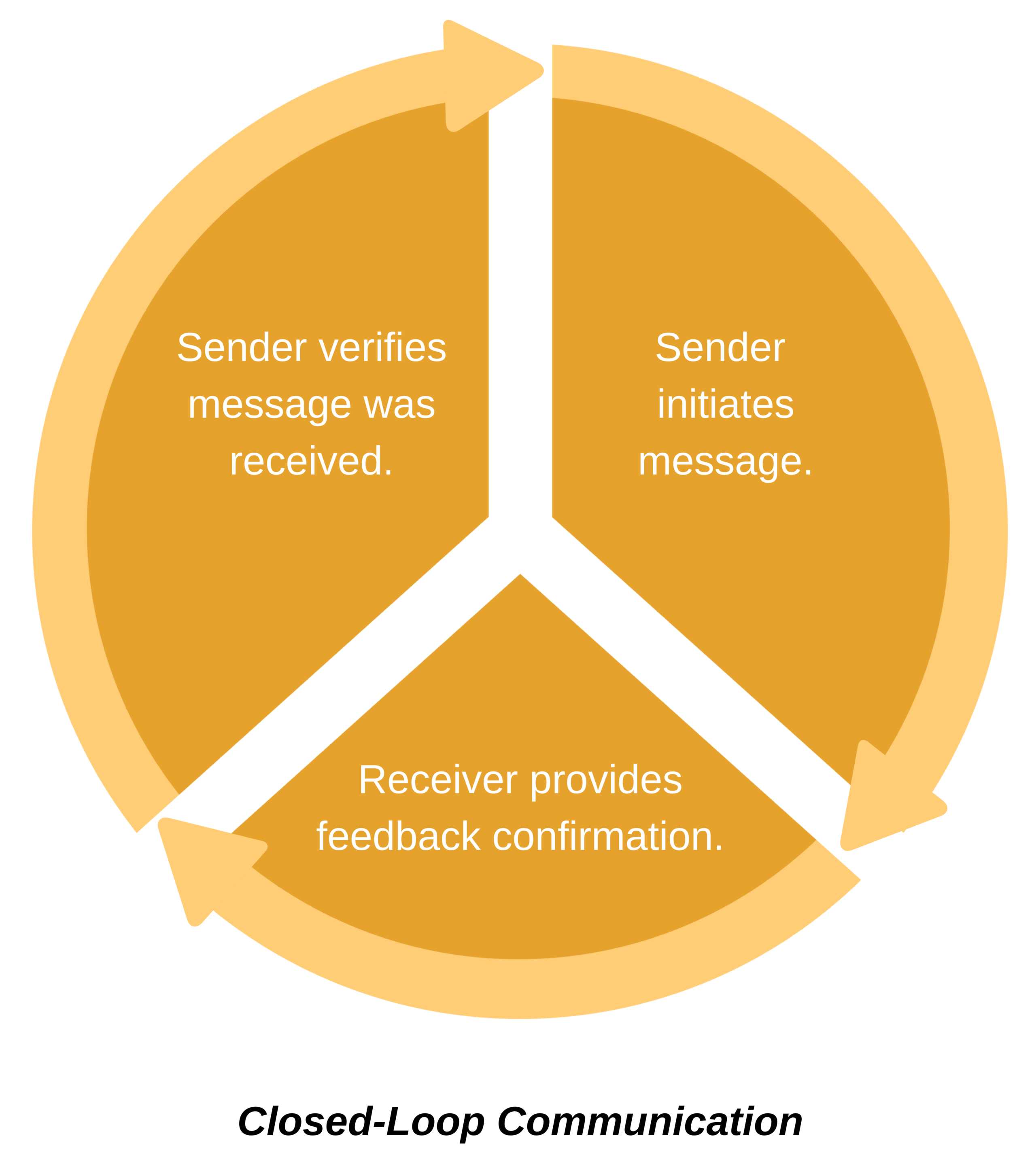Communication
What to Communicate?
The team leader must seek vital information from team members. Likewise, team members should inform the leader of significant changes in the patient’s condition. The leader should encourage members to make suggestions or speak up if the team leader has overlooked something. For example, team members should point out an obstructed intravenous line or question incorrect dosing of an administered drug.
If a resuscitation effort is failing, the team must reassess the situation and go back to the basics. The team must have the following conversations:
- What did we observe during the primary assessment?
- Have we missed something?
- What are the possible differential diagnoses?
- Does anyone have any suggestions?
How to Communicate?
Closed-loop communication is a technique that reduces misunderstandings in the delivery of vital information. During closed-loop communication, the information sender delivers a message, and the receiver repeats the information back. The sender then confirms the message heard to the receiver.

Closed-Loop Communication
For example:
- Leader: “Medication, please insert an IV line.”
- Medication: “Leader, I am inserting an IV line now.”
- Leader: “Medication will insert an IV line, confirmed.”
- Medication: “Leader, the IV line is properly inserted, and we have a good flow.”
Key Takeaway
Successful communication during resuscitation requires team members to:
- Be clear in their roles and responsibilities.
- Know their limitations.
- Accept constructive criticism.
- Communicate “knowledge and sharing.”
- Summarize and reevaluate during resuscitation.
- Perform “closed-loop” communication.
- Use clear messages.
- Practice mutual respect.